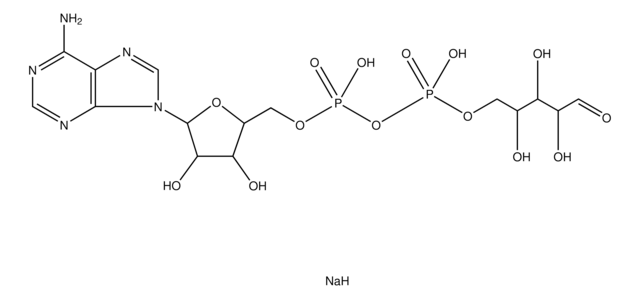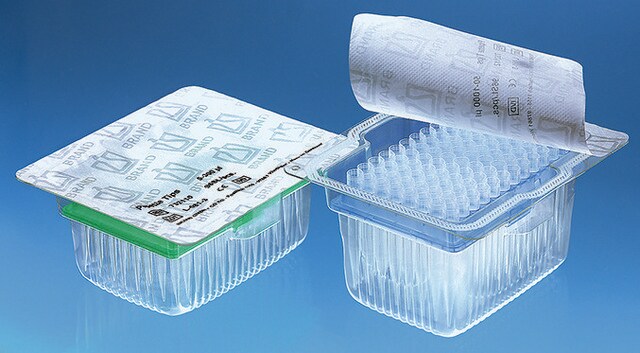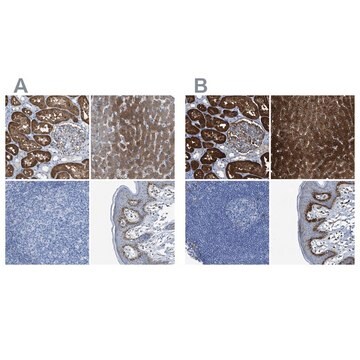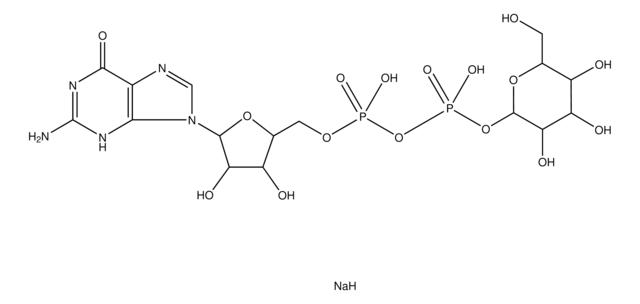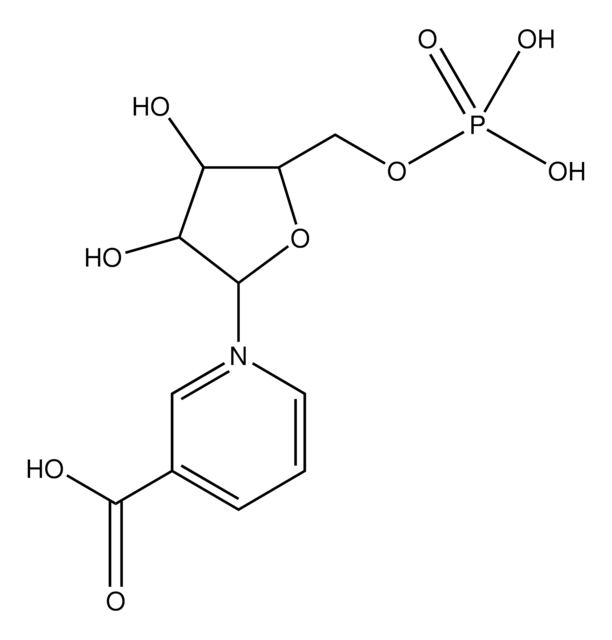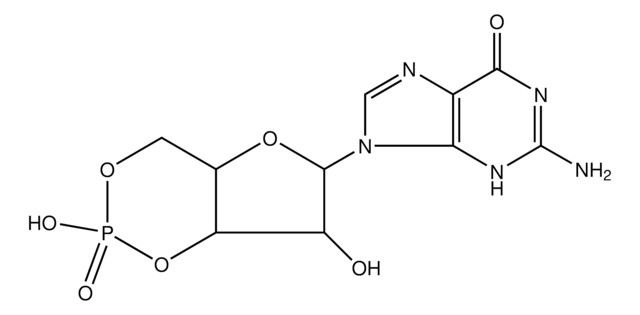C7344
Cyclic adenosine diphosphate-ribose
≥90% (HPLC), lyophilized powder
Sinónimos:
ADP-cyclo[N1:1′′]-ribose, Cyclic ADPR, cADP-ribose, cADPR
About This Item
Productos recomendados
origen biológico
(Ovotestis from sea hare)
Nivel de calidad
Ensayo
≥90% (HPLC)
Formulario
lyophilized powder
temp. de almacenamiento
−20°C
cadena SMILES
O[C@H]1[C@@H](O)[C@H]2O[C@@H]1COP(O)(=O)OP(O)(=O)OC[C@H]3O[C@H]([C@H](O)[C@@H]3O)[n@H]4cnc5C(=N)[N@@H]2C=Nc45
InChI
1S/C15H21N5O13P2/c16-12-7-13-18-4-19(12)14-10(23)8(21)5(31-14)1-29-34(25,26)33-35(27,28)30-2-6-9(22)11(24)15(32-6)20(13)3-17-7/h3-6,8-11,14-16,21-24H,1-2H2,(H,25,26)(H,27,28)/t5-,6-,8-,9-,10-,11-,14-,15-/m1/s1
Clave InChI
BQOHYSXSASDCEA-KEOHHSTQSA-N
¿Está buscando productos similares? Visita Guía de comparación de productos
Categorías relacionadas
Aplicación
Acciones bioquímicas o fisiológicas
Envase
Forma física
Palabra de señalización
Warning
Frases de peligro
Consejos de prudencia
Clasificaciones de peligro
Eye Irrit. 2 - Skin Irrit. 2 - STOT SE 3
Órganos de actuación
Respiratory system
Código de clase de almacenamiento
11 - Combustible Solids
Clase de riesgo para el agua (WGK)
WGK 3
Punto de inflamabilidad (°F)
Not applicable
Punto de inflamabilidad (°C)
Not applicable
Equipo de protección personal
dust mask type N95 (US), Eyeshields, Gloves
Elija entre una de las versiones más recientes:
¿Ya tiene este producto?
Encuentre la documentación para los productos que ha comprado recientemente en la Biblioteca de documentos.
Los clientes también vieron
Nuestro equipo de científicos tiene experiencia en todas las áreas de investigación: Ciencias de la vida, Ciencia de los materiales, Síntesis química, Cromatografía, Analítica y muchas otras.
Póngase en contacto con el Servicio técnico